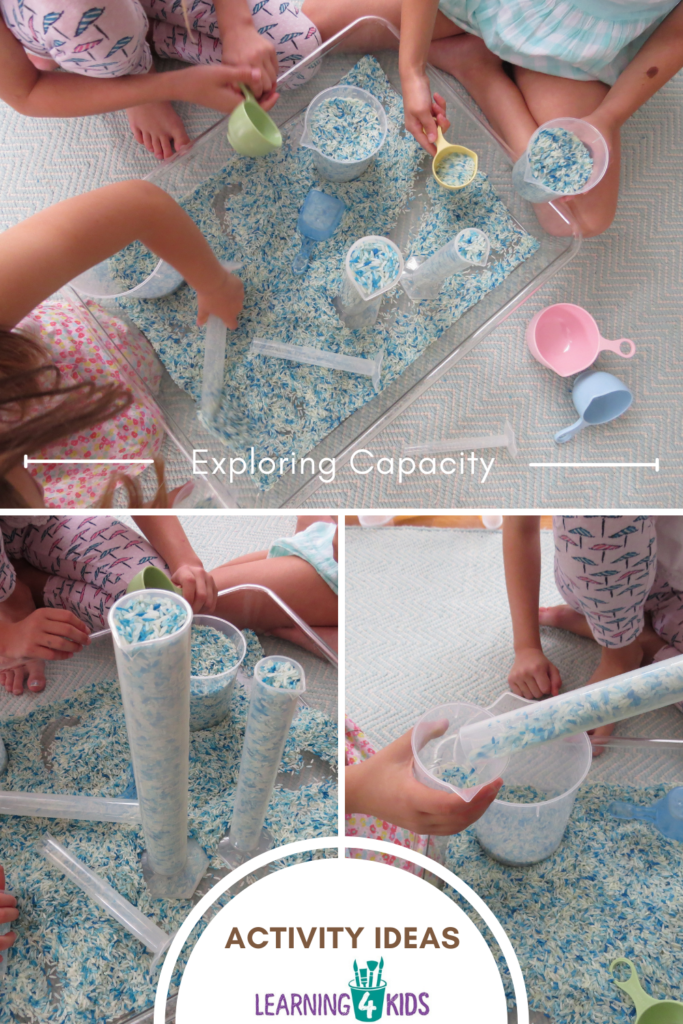
Exploring volume and capacity through hands-on activities will help children develop an awareness of these measurement concepts.
Volume and capacity are properties of three-dimensional objects. Volume is the space that a three-dimensional object occupies or contains; capacity, on the other hand, is the property of a container and describes how much a container can hold.
Volume and capacity are introduced in early childhood classrooms. Setting up opportunities to play and learn about these concepts will build early measurement skills, more awareness and knowledge around volume and capacity and how they are a part of their every day lives.
This hands-on volume and capacity activity is great for small groups and can be set up in an area of the classroom as a maths station for children to return to throughout the week and further explore the concepts and make new discoveries.
What you will need?
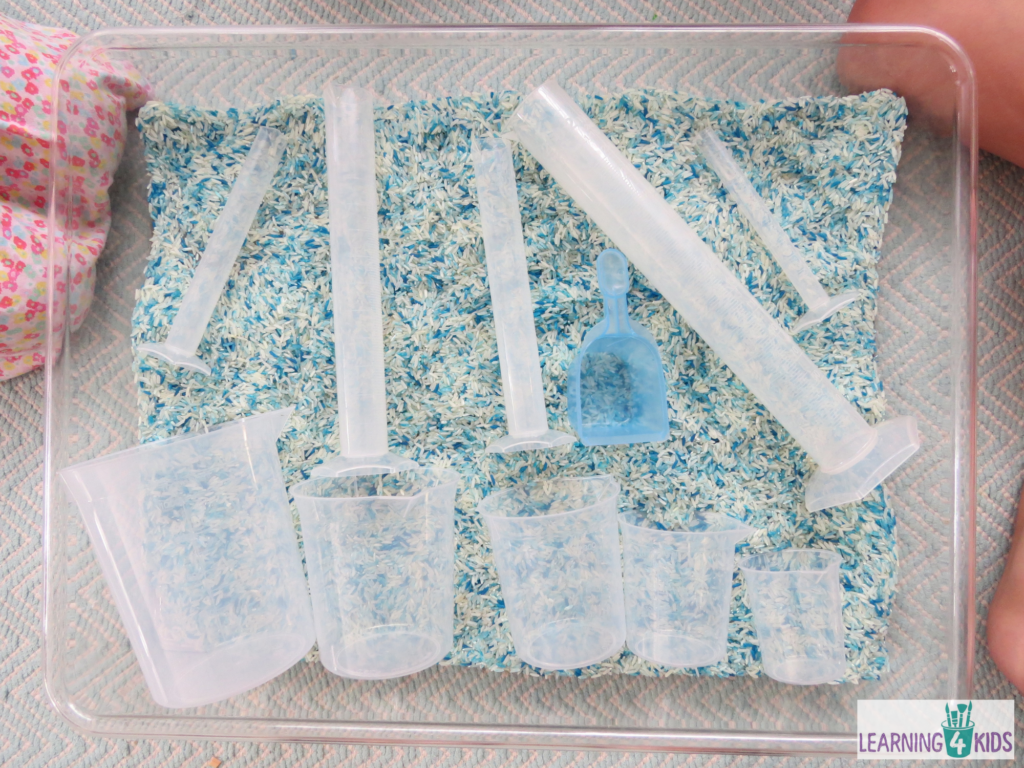
Rice (how to colour rice here), scoops, measuring cups, measuring spoons, various containers of height and width. I added the measuring spoons later to extend the activity and learning. Other alternatives you could use in replacement of rice, water (warmer months/outdoor), beans and sand.
Tip: Set up a tablecloth or sheet underneath the tub of rice to help with clean. The rice can easily be returned to the container.
Some great children’s books that teach volume and capacity. These can be read in class and added to the learning centre or maths station. (affiliate links)
Measuring Up by Lily Lamotte, Measuring Volume by T H Baer and Measuring Weight by T H Baer
Set Up a Question
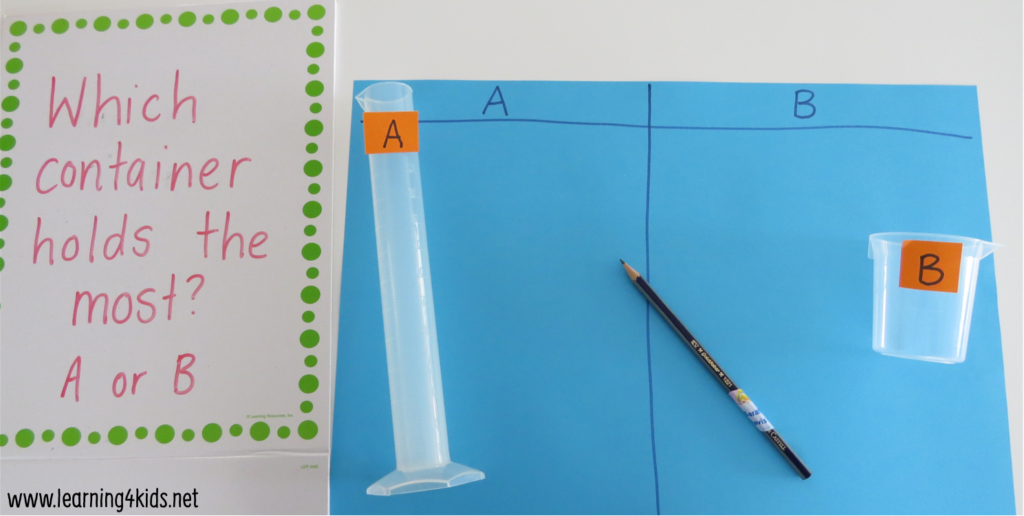
Setting up a question similar to the photo will provoke a discussion of ideas around capacity. Children will share their prior knowledge of capacity and apply this to solve the question and provide their reasoning behind their answer. The best part is when they get to test their theory and find a way to get
Quite often children will assume that the tall and thin container will hold the most due to its height. This is a common misconception with young children as their special awareness and understandings develop over time. It is important to provide children with opportunities to explore these concepts.
Let’s Play
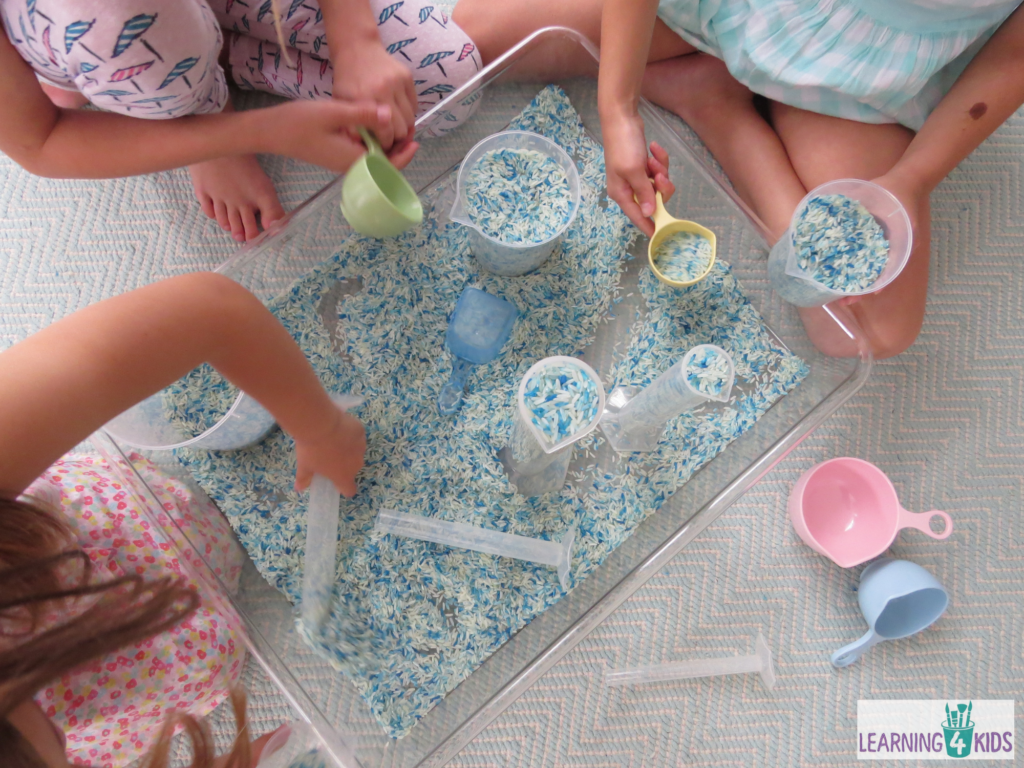
Some Ideas:
- Ask questions, which containers do you think will hold the same? Which container will how the most or least? How do you know? How many spoon scoops does the smallest container hold? Measuring and comparison questions are good questions to ask.
- Provide an opportunity to explore freely the different materials.
- Take the measurement activity to another level by introducing measuring scales.
- Order the containers from the container that holds the most to the least.
Let’s Learn
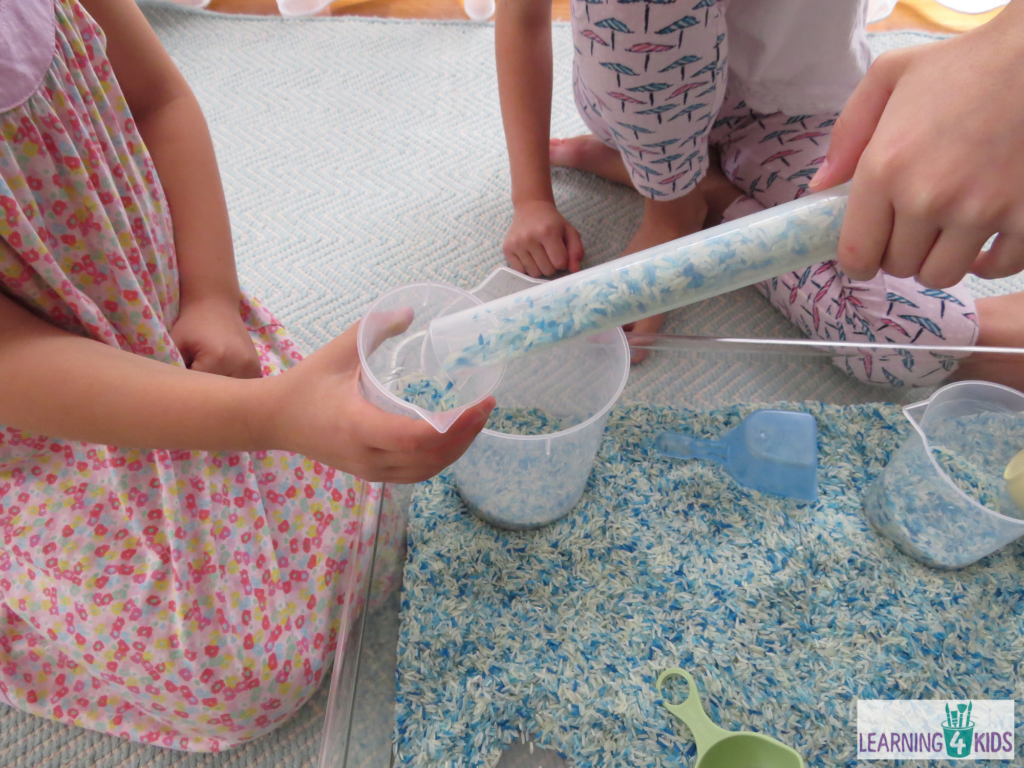
Through many discussions, the children tested their theories by pouring the tallest container from the question into the shortest container. It is so much fun to see them discover that the shortest container held the most and challenge their theories.
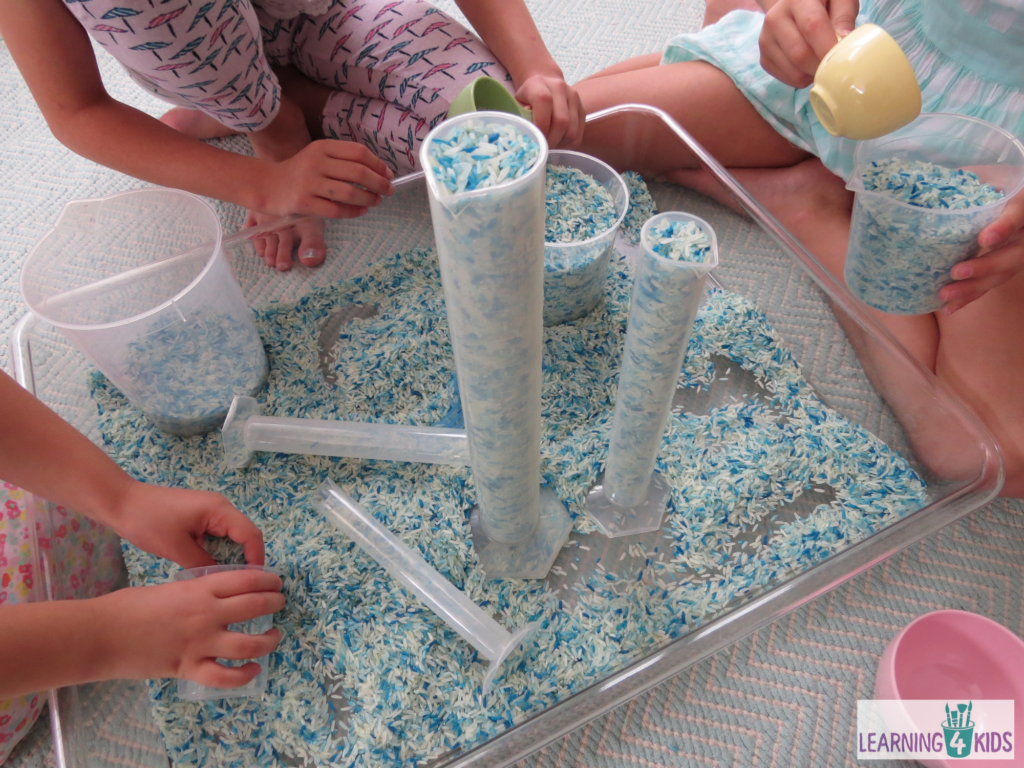
Count the number of scoops with a smaller measuring cup and record the results is another way for find ‘how much each container holds?’
Learning Opportunities
- Spatial awareness – experimenting with quantities
- Language development – vocabulary and using measurement terms
- Mathematics – concepts of capacity, measurement, volume, weight
- Fine Motor Development
- Hand-Eye Coordination and Control
- Cause and Effect
- Concentration
- Reasoning, problem solving and
More Ideas
Click here for more MEASUREMENT activities & play ideas
Available in Our Online Shop
You may also be interested in our Printable Measuring Capacity Activity Mats
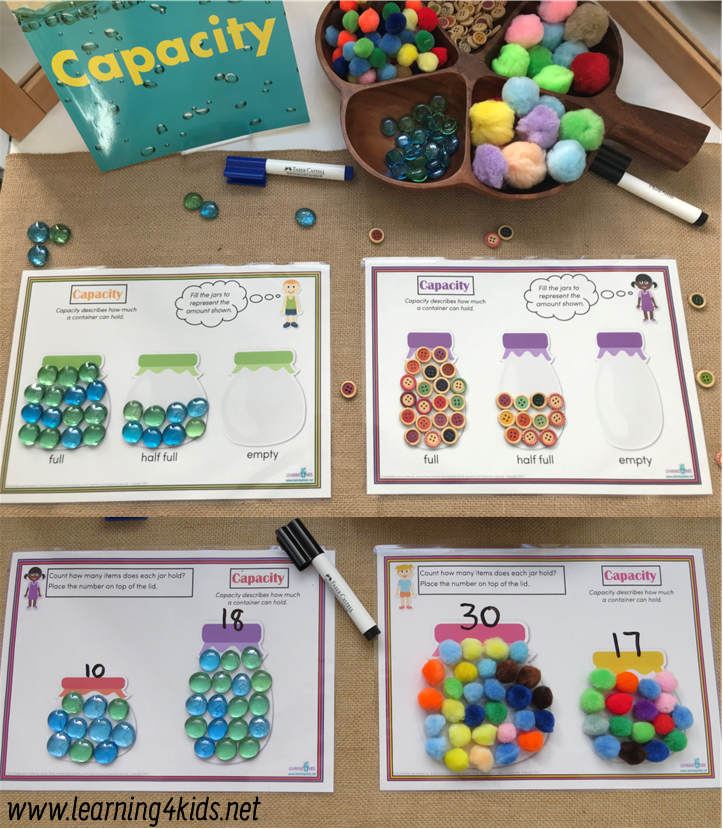
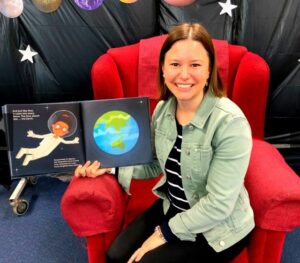
Thank you for these easily applicable ideas! I am a gramma and occasionally babysit my 4 yr. old g’dau. who loves my visits and amusements. Coming up short on ideas landed me on your site with these exciting suggestions! I esp. appreciate that many supplies for activies can be substituted with items around the house.
And thank you for teaching ! Oh what courage to faithfully educate kids mostly with hard to please parents.! I hope you are compensated by the excitement and pleasure of discovery in the kids as well as by the appreciation of at least a few parents.
Maybe in Australia teachers are more widely appreciated than in the U S.